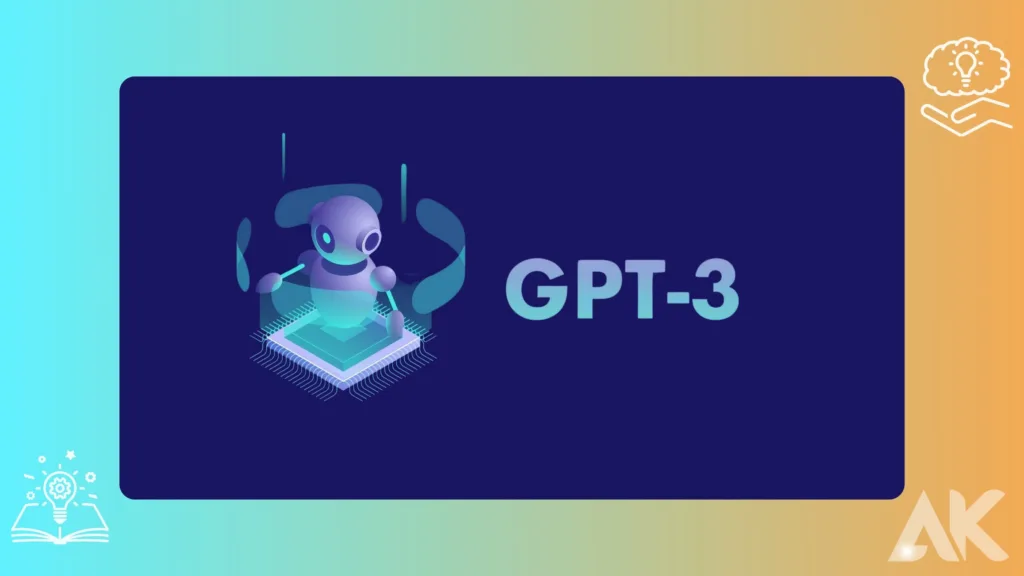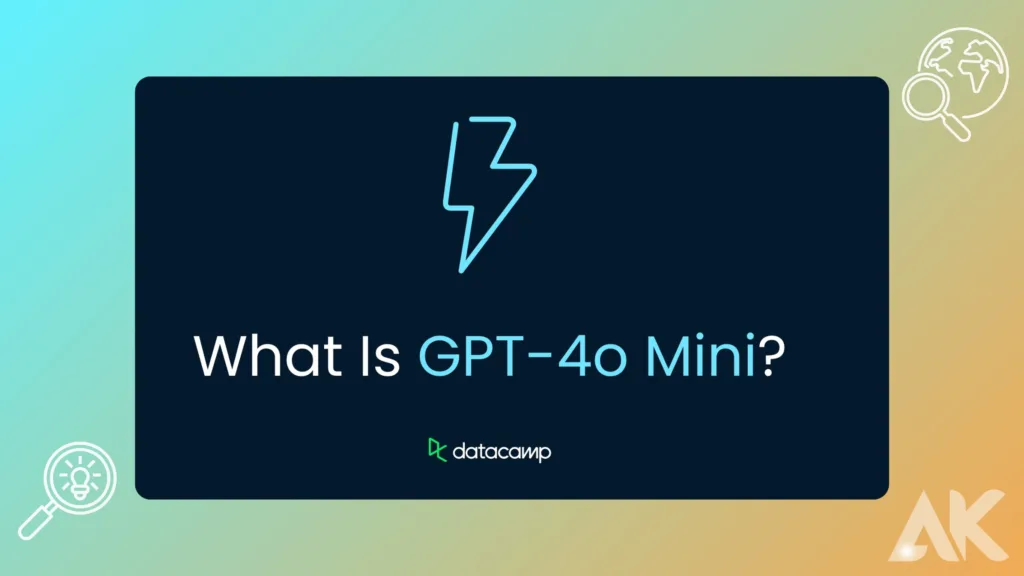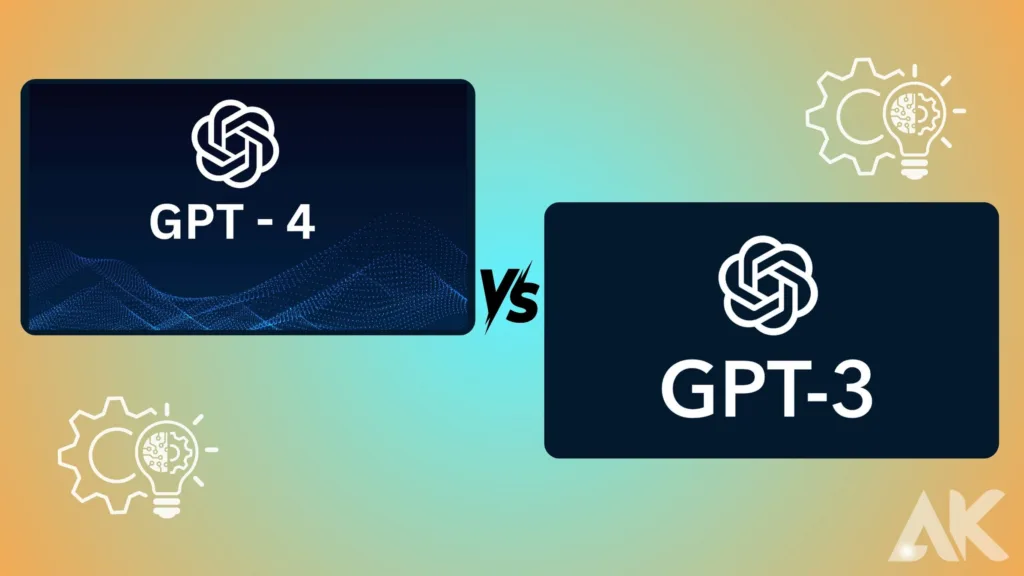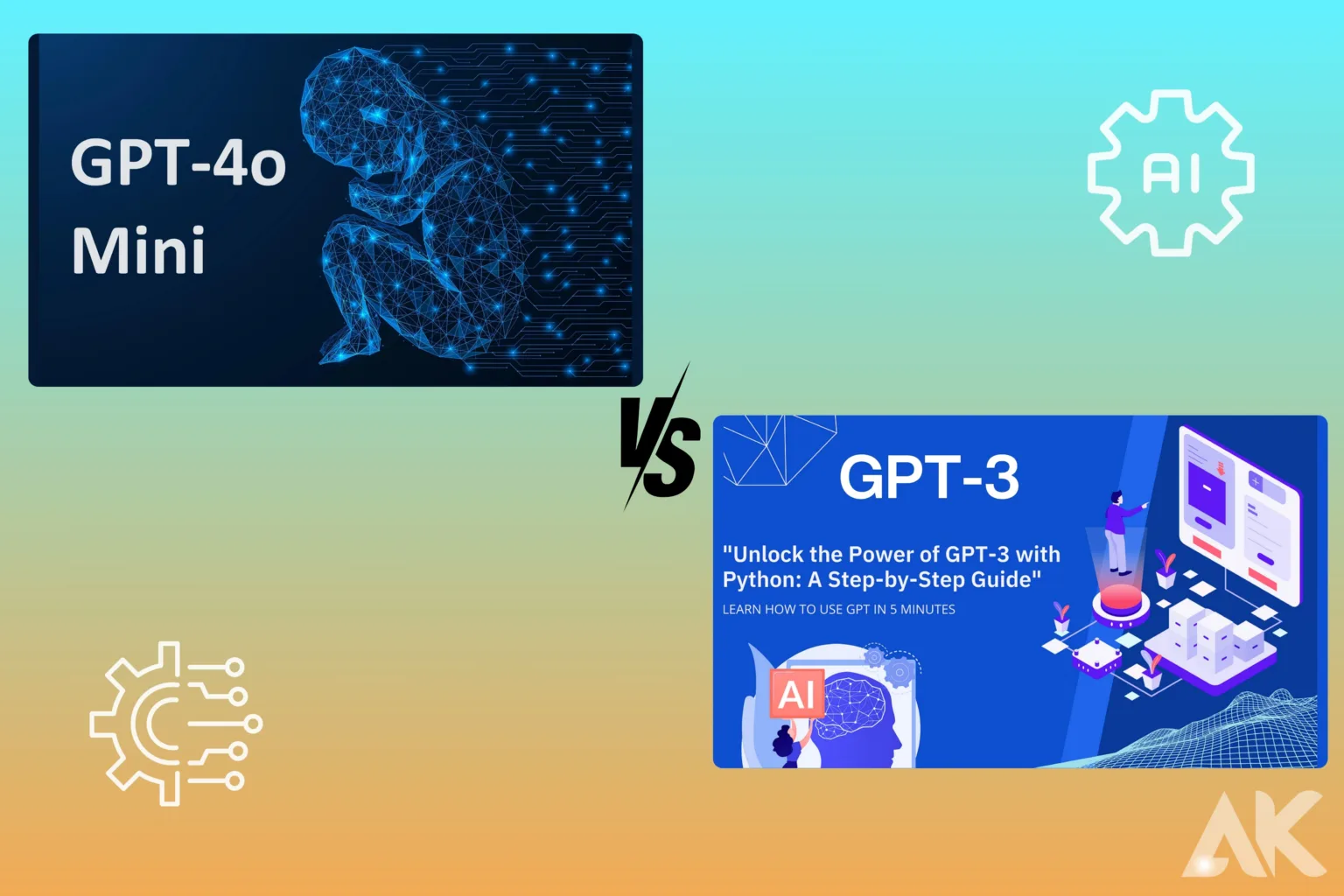GPT-4O Mini vs GPT-3 Artificial intelligence (AI) is a fast-evolving area, and two of the most well-known language models that are now making headlines are GPT-4O Mini and GPT-3. Because these AI models can understand and generate text that is comparable to that of a person, they are valuable for everything from chatbots to content creation.
But what separates these two, and which one is a better fit for your needs? In this post, we’ll take a closer look at GPT-4O Mini and GPT-3 to discover their benefits, drawbacks, and unique features. Whether you’re an entrepreneur looking for an AI solution or you’re just interested in the newest technology, this comparison will help you make an informed decision. We will investigate the field of artificial intelligence together and determine which model works best.
Understanding GPT-3

The Generative Pre-trained Transformer 3, or GPT-3, was a significant advancement in natural language processing. OpenAI’s GPT-3 gained notoriety for producing sentences that appeared human when it was first released to the public in June 2020. GPT-3’s 175 billion parameters, which provided unmatched text production and interpretation capabilities, completely transformed the artificial intelligence model market. Because of its enormous scale, which enabled it to comprehend context and complexity, the model was well-liked by developers who wished to produce more realistic and captivating applications.
The GPT-3’s success can be attributed to its versatility and lack of requirement for specialized training in a variety of tasks. GPT-3 demonstrated an unparalleled level of versatility in AI models, capable of executing tasks such as composing essays and answering questions. Numerous applications in the fields of customer service and creative writing were made possible by its publication. GPT-3 has the potential to be revolutionary, but its computational cost and accessibility were questioned, making it only suitable for larger, more resource-rich businesses to use.
Exploring GPT-4O Mini

The next generation of language models, the GPT-4O Mini, was introduced as AI technology developed. The goal of GPT-4O Mini is to deliver the power of GPT models in a more physically manageable and portable form size. It is intended to be more intuitive and efficient. A strong competitor in the AI space, GPT-4O Mini enhances and expands upon its predecessors’ main capabilities while maintaining their main advantages. This paradigm is meant for a wider range of users, such as independent developers and small businesses, and it lays a strong emphasis on economy and efficiency.
The creation of the GPT-4O Mini marks a paradigm change in the process of developing potent AI models that are also useful in daily life. GPT-4O Mini makes it simpler for clients to incorporate cutting-edge AI capabilities into their projects by streamlining the design and lowering computational requirements. You will be able to effectively use cutting-edge technology for a range of applications with this versatile model.
Technical Comparison: GPT-4O Mini vs GPT-3

When comparing the GPT-4O Mini vs GPT-3 one must take into account their different technological features. The architecture of these models has a major impact on their performance and functionality. The GPT-3 is well known for having a sizable processing capacity, which makes it easy to accomplish challenging jobs. In total, it possesses 175 billion traits. It also implies that, to function properly, it needs a significant amount of processing power and is resource-intensive.
However, the GPT-4O Mini’s design prioritized efficiency over all other factors. Even with fewer variables and a lower processing power requirement, it performs better than GPT-3. This is why some clients may choose the GPT-4O Mini over the GPT-3 if they are unable to use an as large model. The GPT-4O Mini’s simple performance and effective architecture make it a compelling substitute for larger versions for customers seeking substantial AI capabilities at a lower cost.
Capabilities of GPT-4O Mini vs GPT-3
The distinctions between GPT-4O Mini vs GPT-3 functionalities demonstrate the advancements in AI language processing. Given that they are both fluent readers of natural language, both models possess the ability to read and write in a way that is comparable to human speech. Their approaches and behaviours, meanwhile, are still very different from one another. With its extensive parameter set, GPT-3 can produce sophisticated, nuanced responses to even the most difficult language challenges. As a result, it performs well in situations requiring profound understanding and contextual awareness.
Despite its small size, the GPT-4O Mini is a very good one-person device. It outperforms larger competitors in situations when efficiency and speed are critical, achieving superior results with fewer resources. GPT-4O Mini is a great choice for applications that demand quick turnaround times and real-time processing. Notwithstanding its diminutive size, the GPT-4O Mini’s exceptional accuracy and robustness ensure that users can
Applications of GPT-4O Mini vs GPT-3
GPT-4O Mini vs GPT-3 is used in practice by a wide range of industries, and these models’ benefits help them all operate more efficiently. GPT-3 is gaining popularity in areas like customer service, where it enhances user satisfaction because it can produce responses that are nearly identical to those of a human. Its versatility shines through best in creative writing, as it inspires original thought and artistic composition.
The GPT-4O Mini is an excellent choice for applications that must be processed and deployed rapidly due to its emphasis on efficiency. It is useful in fields where timely responses and content production are crucial, like social media management. Due to its straightforward architecture, it’s a popular choice for startups and smaller businesses looking to leverage AI capabilities without breaking the bank. Because of the power-to-practicality ratio of GPT-4O Mini, businesses looking to innovate and stay ahead of the curve have new chances.
Strengths of GPT-4O Mini vs GPT-3
GPT-4O Mini vs GPT-3 For different needs and preferences, each model provides unique benefits. The size and accuracy with which GPT-3 performs challenging jobs are its principal features. Owing to its vast training data and configurations, it can understand intricate language patterns and offer comprehensive solutions for scenarios requiring in-depth analysis and understanding.
However, scenarios where economy and efficiency are critical components are where the GPT-4O Mini performs best. Because of its effective design, it can perform remarkable tasks with fewer resources, making it more accessible to a larger group of people. The GPT-4O Mini is a strong option for anyone who wishes to benefit from AI’s promise but cannot afford the astronomical costs of larger models because of this capability. It is appealing and a suitable option for various purposes due to its easy-to-use design and versatility.
Conclusion
GPT-4O Mini vs GPT-3 It is evident from a comparison of GPT-4O Mini and GPT-3 how far artificial intelligence language models have come and how many options there are to meet a variety of user needs. GPT-3 is a unique tool for challenging tasks because of its massive size and broad range of capabilities. For businesses that require in-depth understanding and analysis, it functions well. Given that it can be costly and resource-intensive, it might not be the ideal choice for everyone.
But, because of its lower cost, GPT-4O Mini is a fantastic choice for people and small businesses wishing to use AI without going over budget. It’s a terrific option for anyone looking for cost and functionality because of its small size and reasonable pricing. Both strategies place a strong emphasis on minimizing biases, assuring moral applicability, and using AI ethically. As AI technology develops, we could expect more exciting findings that could impact language models in the future and offer more chances for people and businesses to benefit from AI.
FAQ
Q1: What particularly sets GPT-4O Mini apart from GPT-3?
The primary differences between them are in their capacities and sizes. GPT-3 is a sophisticated model with powerful AI capabilities and 175 billion parameters. A more affordable and easily obtainable version is the more compact and efficient GPT-4O Mini.
Q2: What is the more effective model for small enterprises out of the two?
Small enterprises are better suited with GPT-4O Mini because to its price and ease of usage. Because of its cost-effective architecture, smaller organizations may integrate advanced AI capabilities without having to pay a hefty price.
Q3: How do the models react to moral dilemmas?
In both GPT-4O Mini vs. GPT-3, ethical issues are prioritized to reduce bias and promote transparency. OpenAI creates policies to address moral dilemmas and guarantee the ethical application of AI.
Q4: Which model is better for creative writing?
Yes, any technique can be used to produce creative writing. GPT-3’s extensive feature set makes it ideal for complex creative work, while GPT-4O Mini offers practical and efficient content production options.
Q5: What are the cost differences between the two models?
GPT-3 is usually more expensive because of its higher resource needs. Modern AI capabilities are provided by the more reasonably priced GPT-4O Mini, which is accessible to a wider range of users.

